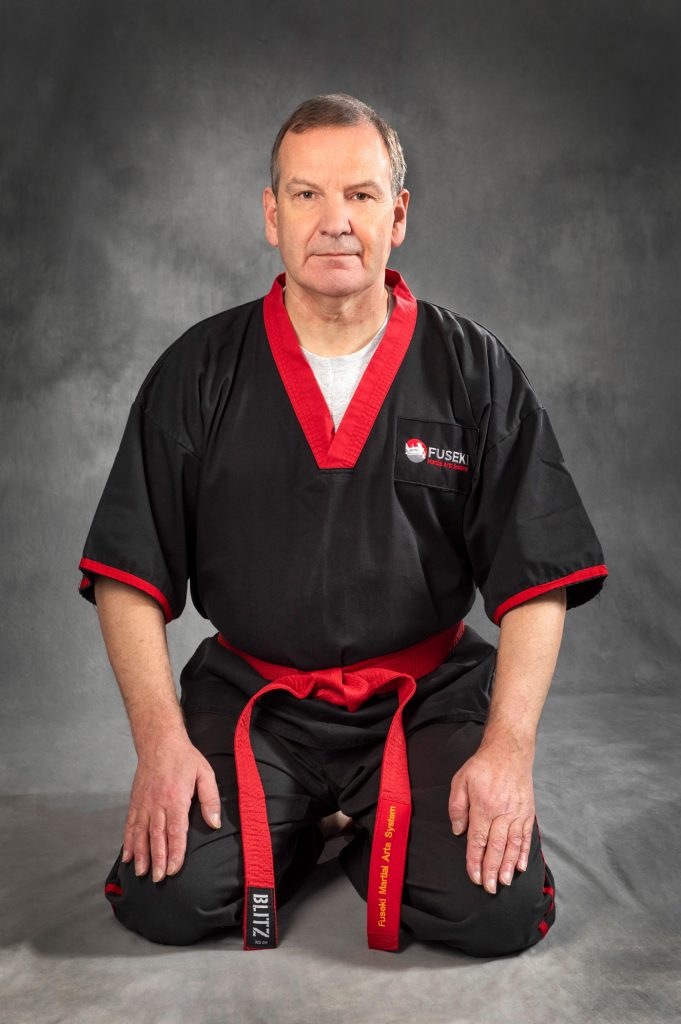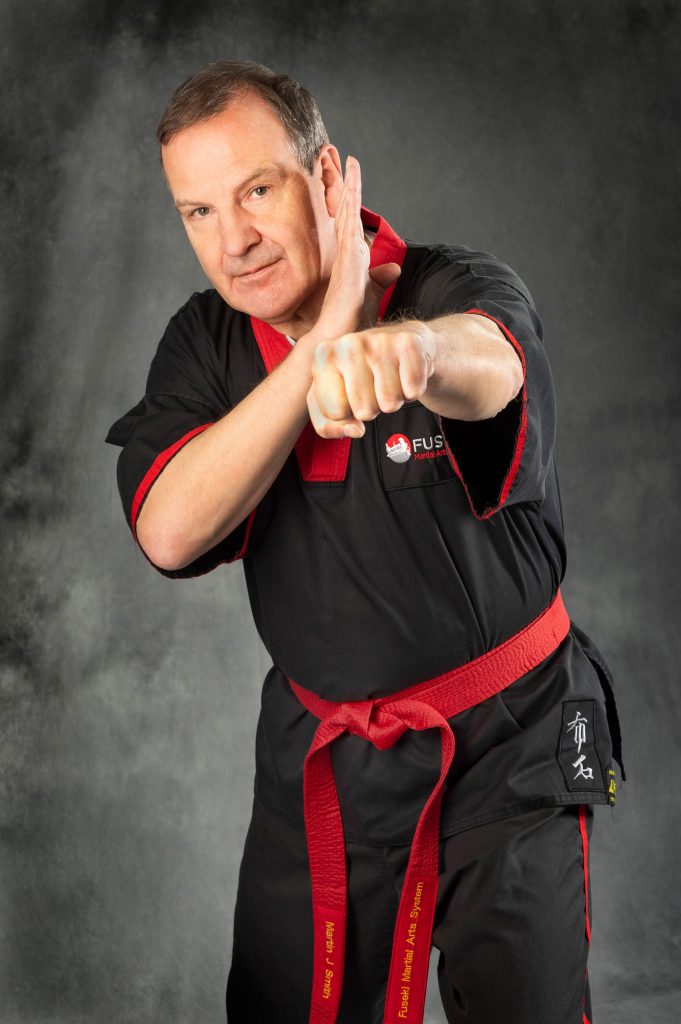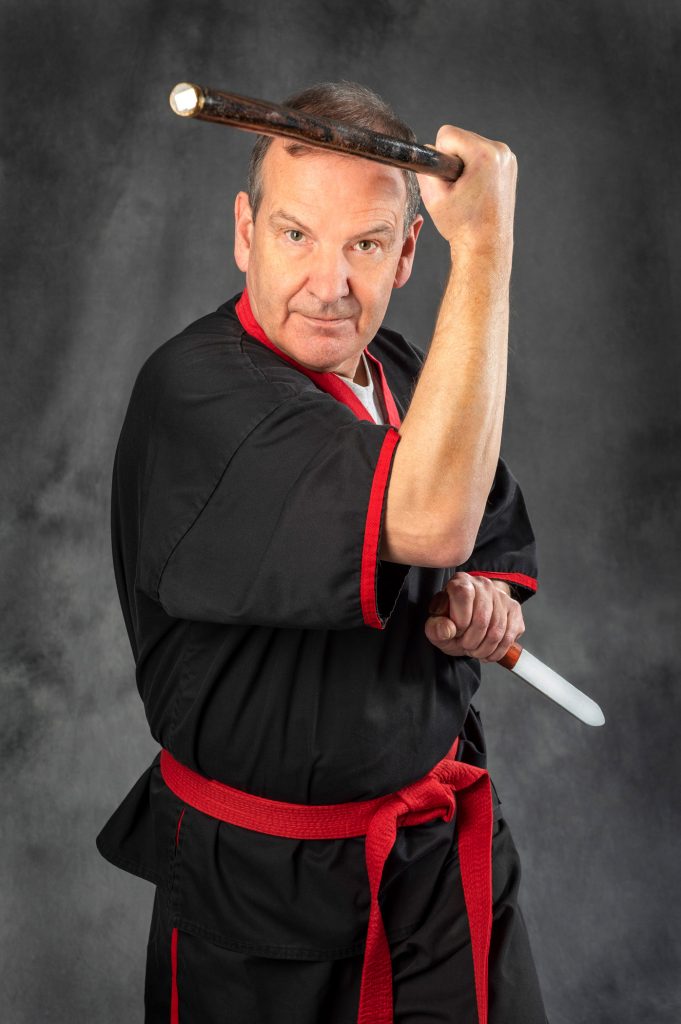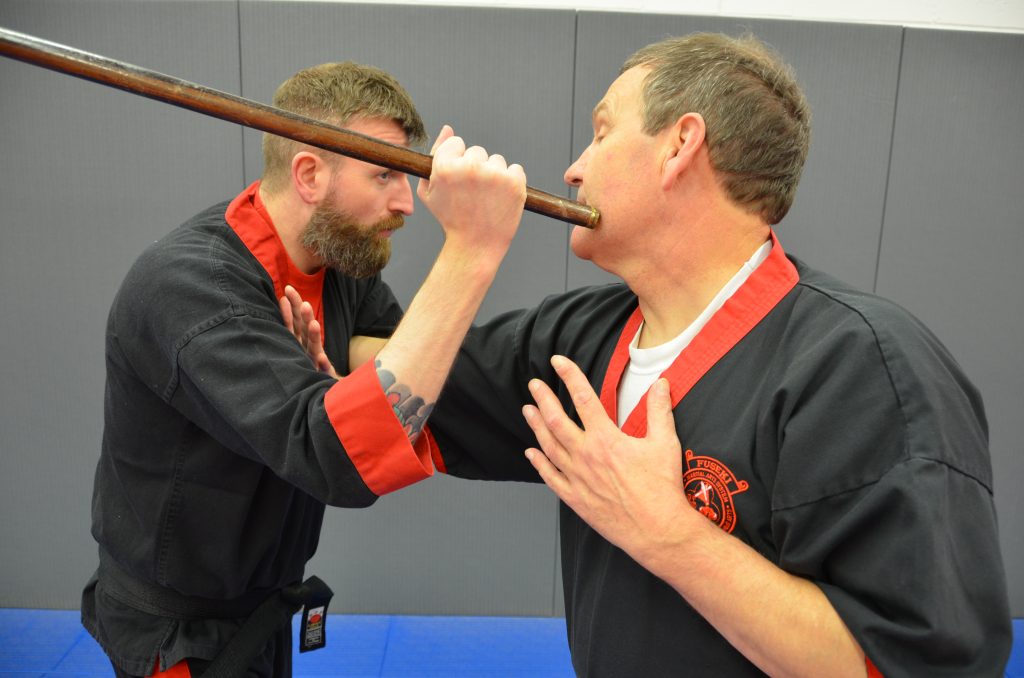Fuseki
The Twelve Programmes
The Fuseki Martial Arts System aims to give its practitioners the full range of options, enabling them to respond to any of the situations which could occur in combat. To achieve this, the creator of the FUSEKI Martial Arts System, Martin Smith, drew from over three decades of training in various systems, with top instructors from around the world.
During it’s formation, the system was broken down into twelve programmes, in which all aspects of training can be placed. However, the programmes are not the syllabus, rather the syllabus is drawn from the programmes. Students of the system will have a deep understanding of the first 9 programmes by the time they attain 2nd Dan. Programmes 10 to 12 are then studied & mastered during the 3rd & 4th Dan levels.

#1
Long/Medium Range Striking
This programme covers all the basic punches and kicking techniques common to most empty hand striking systems. These techniques are by far the simplest moves for new practitioners to master and are those most expected by the novice who first enters the field of martial arts training.
The techniques within this programme are drawn in the main from the SHOTOKAN Karate system and the Combative Kickboxing system devised in 1993.
The Combative Kickboxing System was developed from Martin’s studies within the JKD group through trainers such as Larry Hartsell, Rick Faye, Rick Young, Bob Breen and of course Master Dan Inosanto.
#2
Footwork, Entering & Destructions
Footwork and good body movement are the cornerstones to all martial arts. It is for this reason that this programme is placed close to the start and emphasised throughout training at all levels.
Without the ability to move and to enter in and out of the different ranges of combat then all other skills cannot be fully utilised. There is only one basic stance in the system from which most techniques are generated.
The destruction techniques are drawn from the Eskrima and Silat systems and are perhaps the most effective and economical techniques available to the martial arts practitioner and therefore are considered a core foundation to the system as with the footwork.
#3
Close Quarter Striking
With entering and footwork comes the move into the closer fighting ranges. All good martial artists must have a sound understanding and ability to work in close range with an opponent.
For this reason the system aims to develop the student’s skills in the realm of effective close range fighting, starting with this programme which explores the most effective weapons at our disposal, namely the knee, elbow and head strikes.
Together with these key body weapons other lesser-known striking techniques such as the use of heel strikes are also included in this programme.

#4
Standing Grappling
Many real life confrontations have the capability to move very quickly into close range and result in the need for an appreciation of standing grappling.
Techniques in this programme are drawn from a wide range of systems and leading martial arts instructors. In the initial stages of Fuseki’s development, material drawn from JKD and Silat practitioner Marc McFann formed the main material for this programme.
However Martin’s experiences training with the great Vale Tudo and no holds barred practitioner Marco Ruas has lead to even more quality material being included to this programme.
#5
Takedown Systems
Many would see no reason to include a programme of takedowns into a practical self-defence/martial arts system, however an understanding and skills in this area are vital to both apply and defend against those who would seek to take you down to the ground.
These techniques can prove very effective to control an opponent but also to take a more superior standing fighter to a position of disadvantage and hence create a tactical advantage to the FUSEKI practitioner.
Takedowns within this programme include basic throwing and sweeping techniques to the more exotic moves from the Eskrima and Silat systems.
#6
Groundwork Systems
The inclusion of groundwork is another essential to any fully integrated system. Within this programme not only the basic ground holds and escapes are included but also ground defence against a standing opponent, together with fast and safe methods of moving and getting up of the floor.
Fighting on the ground is a skill which must be developed in order for the student to fully appreciate both the advantages and dangers of working from the ground.
The ground defence to a standing opponent techniques have been drawn from the Penjak Silat systems, where as the ground grappling and highly effective and devastating striking on the ground has been drawn from the Ruas Vale Tudo system taught to Martin during his personal training with master of no holds barred fighting, Marco Ruas.
#7
Joint Locking & Sensitivity Training
The sensitivity drills and concepts drawn from the Phillipino systems add a further dimension to the Fuseki Martial Arts System and aid all aspects of training, especially when training in the programmes eight and nine, when utilising stick and edge weapon training.
Many practitioners fail to truly appreciate the advantages of sensitivity training and its vital links to making joint locking work, as the alternative to the use of striking applications, in situations when gross strength is your real opponent.
Due to Martin’s extensive training with true masters in their arts and chosen fields of martial arts training the Fuseki student is able to fully apply and understand the use and integration of the aspects of this programme into their training.
#8
Single & Double Stick Systems
The inclusion of stick work within the system has many advantages, including :-
A greater appreciation of flow, Half beat application, Multi skill application, Increased Sensitivity, Increased eye hand coordination, Speed enhancement
Introduced at senior student level the use of stick work is quickly assimilated by the FUSEKI practitioner and enables them to hone a number of vital skills detailed above.
One key factor in the stick training is the development of the right stance and opposite lead training within the system. In keeping with Martin’s initial training in the Eskrima systems, by leading UK practitioner Brian Jones, all work is conducted at some stage on both the left and right side, a practice which often sets the FUSEKI student at a level above that of students who have worked on Eskrima systems throughout their training.

#9
Knife Fighting & Defence
Considered by the Founder of the system as the most important programme and aspect of training, the knife programme galvanises many of the concepts within the Fuseki Martial Arts System and quite literally gives the practitioner a vital edge in a host of different ways.
A training partner in Martin’s early training days once said, If a technique or move does not work against a knife then it probably isn’t going to work at all in a real street situation. It is this philosophy, which has brought Martin to seek out some of the best practitioners in edge weapon training and to incorporate these concepts throughout the Fuseki system.
The knife programme does not advocate the use and carrying of knives, rather it emphasises that the use and understanding of the blade as a unique training aid to the Fuseki practitioner. This program aims to heighten the moral and legal awareness of edge weapons and their position in society.
#10
Single & Double Stick Systems
Having developed skills around stick and knife this section further hones the practitioners skills in a range of traditional weapons from the Okinawan and South East Asian areas.
Use of weapons like the Sai, Nunchaku and long staff help improve coordination as well as strengthening core hand and eye skills with weapons of all structures and compositions.
All of these weapons should be seen as an integral part of the overall skills needed to be a fully and well-rounded martial artists.
#11
Goshin Jitsu & Application
With practice of all the previous ten programmes the Fuseki practitioner moves towards the ultimate goal of being able to apply their skills in combative situations.
It is not always easy to transition from more structured and often regimented practice to the more free flow spontaneous requirements of real application.This programme considered a senior level in the system focuses on the skills and attributes needed to achieve such applications.
#12
Integration
This final section truly embraces the ideas of the Fuseki Practitioner having all options available to make them a fully integrated and effective martial artist at all levels of their personal development

